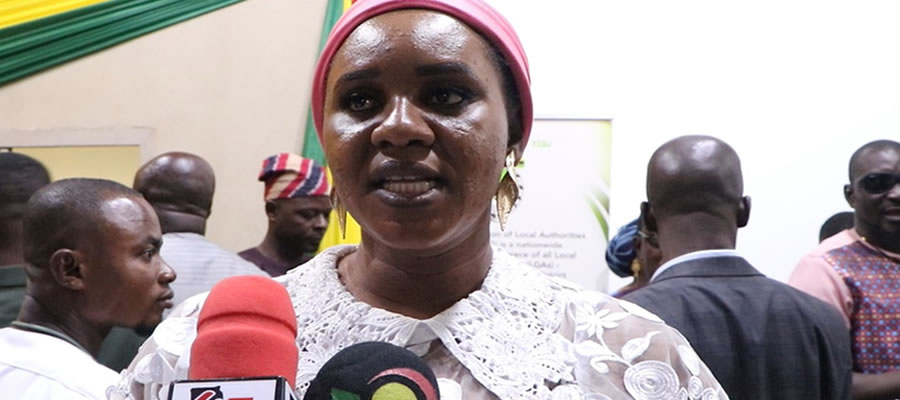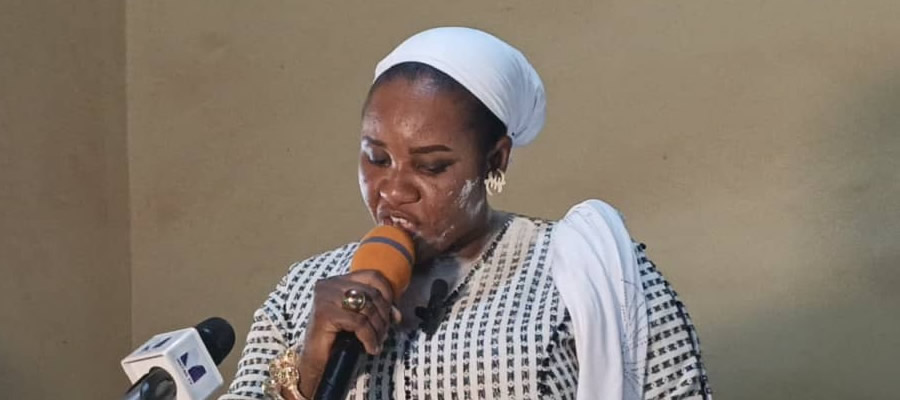

DEVELOPMENT ISSUES FOR 2018-202
Introduction
Plans are prepared based on identified issues to be addressed. Development issues that will have impact on the lives of the people for the next four years (2018-2021) have been captured under this chapter for harmonization and prioritization. These issues cover areas such as education, health, Agriculture, infrastructure, water and sanitation, energy and employment.
Identification of Community Needs
As part of the planning process, public hearing was conducted in the various sub-structures and communities to gather pertinent issues affecting the lives of the people. These issues warranted some needs that must be provided to address existing issues in the various communities. The needs are summarized below;
- Generation of employment opportunities for the teaming youth
- Support for SME’s development
- Provide skill training to boost Local Economic Development
- Strengthen the Sub-structures to function
- Expand agricultural extension services to enhance production
- Construct irrigation dams
- Inadequate warehouses for agricultural produce
- Supplying of farm inputs (e,g fertilizers and improved planting materials)
- Fighting of pest and diseases on farms
- Construct market facilities
- Maintenance of feeder roads linking rural communities
- Tarring of urban roads
- Construction of culvert in needy communities
- Expansion of electricity to cover most communities
- Maintenance of street lights
- Provision of ICT centers in urbans areas
- Provide adequate classrooms with water and toilet facilities for basic schools
- Provide adequate furniture and TLMs for basic schools
- Ensure children’s access to free basic education
- Construct CHPs compounds in needy communities
- Construction of maternity blocks
- Procure Ambulance for health facilities
- Inadequate health services personnel
- Improve tele density penetration rate
- Provide skip containers to manage solid waste in major communities
- Sensitization to educate people to construct household’s latrines
- Maintenances of existing public toilets
- Inadequate water facilities
- Manage and prevent disasters within settlements
- Reduce domestic violence against women
- Empower women economically to raise their living standard
- Protect children’s right
- Reduce child abuse and streetism
- Judicious application and transparency in governance and frequent consultation on issues that affect local people.
- Improvement of revenue generation for development
- Maintenance of adequate security for life and property
- Improve the lives of People living with disability
Harmonization of community needs and aspirations with identified key development gaps/problems/issues.
The needs identified under 2.2 must be harmonized with the issues identified from the performance review and the updating of the district profile to get a harmonized development issues which will be key development issues with implications for 2018-2021. Table 2.1 shows the harmonization.
Table 2.1: Harmonization of community needs and aspirations with identified key development gaps/problems/issues
An average score of 3.0 shows strong harmony between the community needs and aspiration and the issues identified from performance review and updating of district profile. This indicates that the gaps identified in the review of 2014-2017 DMTDP are still issues that will have implications for 2018-2021, therefore there should be programmes to address them.
However some of the issues were not prioritized by the communities but these issues relate largely to the Assembly and its departments in their delivery of services and are therefore institutional challenges or gaps. Hence, they are still relevant in the Assembly’s development and therefore will have implications for 2018-2021.
The harmonized key development issues with implications for 2018-2021 were grouped under the thematic areas of GSGDA II as shown in table 2.2
Table 2.2 Key development issues under GSGDA II with implications for 2018-2021
Harmonization of key development issues under GSGDA II with implication for 2018-2021 with Agenda for Jobs, 2018-2021
To ensure that the issues to be addressed in the district are within the framework of the national development agenda, the key development issues under GSGDA II with implications for 2018-2021 were harmonized with the issues from the Agenda for Jobs, 2018-2021. Table 2.3 shows the results for the harmonization.
Table 2.3: Identified Development Issues under GSGDA II and Agenda for Jobs
Source: DPCU, 2017
From table 2.3, the issues under GSGDA II are similar to those under Agenda for Jobs, 2018- 2021. Since there are similarities, the similar issues from GSGDA II were adopted by replacing them with those of the Agenda for Jobs together, which are shown in table 2.4 below.
Table 2.4 Adopted Development Dimensions and Issues of SMTDP of the Municipality
Prioritization of development issues
The adopted development issues in table 2.4 seem to be a tall list and addressing everything within the plan period is synonymous to impossibility, looking on the face of available resources. The DPCU therefore prioritized these issues by establishing the degree of feasibility of their implementation given the available resources. The prioritisation was an objective assessment of each of the issues considered by applying them to the analysis of Potentials, Opportunities, constraints and challenges (POCC) as contained in Table 2.5 below.
Table 2.5: Application of POCC analysis
Impact Analysis
As a process of prioritizing the adopted issues from the POCC analysis, the issues were subjected to some socio-economic indicators to assess how they will affect the lives of the people and the economy of the Municipality after they (issues) have been addressed within the plan period. In the course of this, a scale of 0-10 was used to measure gravity of the issue on the indicators, with strong impact getting a scale of 10 and so on. The results of the impact analysis is shown in table 2.6 below
Table 2.6: Impact analysis
Source: DPCU, 2017
The ranking of the issues after the impact analysis using the above indicators also helped in the prioritization of urgent issues adopted from the agenda for jobs, 2018-2021. The higher the figure, the stronger the issue has on the indicator.
DEVELOPMENT PROJECTIONS, ADOPTED GOALS, POLICY OBJECTIVES AND STRATEGIES
Introduction
Planning process is futuristic and aims at reducing uncertainties. As a result, various projections are made over the plan period to give an indication of what is expected in the future. This section therefore presents the projections of the district population and infrastructural needs. Again, expected agricultural production levels over the plan period have also been captured under this section.
Development Projection
Human resources and needs vary according to the size, composition and distribution of the population. It is for these reasons that the population projections for the planned period have been made to facilitate the calculation of services and facilities needed for the period.
Population Projection
The current population projection is based on the Population and Housing Census results of the district recorded in 2010 by the Ghana Statistical Services (GSS). The base projected population (2013) as has already been indicated was 99,482 with an annual growth rate of 2.5%. Out of this figure, the male and female proportions are 49% and 51% respectively. The estimated total number of households in 2010 in the district is 20,178 with an average household size of 5.5 people.
Assumptions
The following assumptions have been made about the district’s population over the plan period spanning 2018-2021.
• The base population growth rate of 2.5 % per annum will remain constant over the plan period.
• The total fertility rate of 3.4% per woman (2010) will not change.
• The survival rate of the district will increase gradually or remained constant over the plan
• Average infant mortality rates of 2.3% will decrease to 20%
• Immigration will be checked over the plan period
• General migration in and out of the district will be insignificant.
• There will not be the up surge of any major economic activity such as mining/large industrial activity
• The outbreak of an epidemic is not expected over the plan period
• The district population will grow geometrically over the plan period spanning 2018-2021
• Male and female proportions of the districts population will remain constant over the plan period.
• The population proportion of individual settlement will not change
Base on the above assumptions, the projected population and the corresponding facilities needs of the district over the plan period have been presented in the subsequent pages below
Population for all settlements in the Municipality from 2010/17 to 2021 (projected)
The Municipality recorded a total population of 92,649 in 2010 PHC. However, based on the projections, the population grew to 106,968 in 2017. As further indicated in the table below, the population is expected to reach 118,217 (projected) by 2021.
Table 3.1: Classified Projected Settlements’ Population (2018-2021)
Source: 2010 PHC GSS &JSDA, DPCU, 2016
DEVELOPMENT PROGRAMMES AND SUB-PROGRAMMES
Introduction
Adopted sustainable issues need to be addressed to bring holistic development. These can be done by forming programmes and sub-programmes with activities and projects to be implemented. All these programmes and the financial strategies are indicated in this section of the plan.
Programmes and Sub-Programmes
Programmes may refer to a set of related activities that cut across several major sectors. It may refer to a grouped set of capital investment activities (e.g. a school construction programme), or to a specific initiative (e.g. a school feeding programme). Meanwhile, a sub-programme, comprise a distinct grouping of services and activities that fall within the framework of a budget programme which for management reasons it is desirable to identify separately within the budget programme. Table 4.1 shows programmes and sub-programmes of the Municipality.
Table 4.1: Programmes and Sub-Programmes of the District
Date Created : 6/23/2023 12:00:00 AM












 facebook
facebook
 twitter
twitter
 Youtube
Youtube
 +233 593 831 280
+233 593 831 280 0800 430 430
0800 430 430 GPS: GE-231-4383
GPS: GE-231-4383 info@ghanadistricts.com
info@ghanadistricts.com Box GP1044, Accra, Ghana
Box GP1044, Accra, Ghana